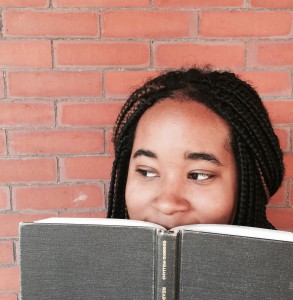Five Questions With Niyah Morris
Kayla Rae Candrilli: Your story, “Trees” in NANO 9.2’s queer feature, amazes me in its subtlety and its ability to bring sexualities commonly erased by mainstream culture (and even factions of queer culture) to the forefront of a flash story. Can you talk a little about what you wanted this story to achieve? And how you were able to achieve it in such a small space?
Niyah Morris: Thank you so much for those kind words. I think, more than anything, I wanted this story to showcase a kind of queerness that is quieter and more subdued than some might expect, but is no less real as an experience. I never see people who are my ‘kind’ of queer in literature, and I think having approached writing this piece without feeling the need to be overly vocal in announcing the queerness allowed me to use the small space of flash fiction to show this character just navigating the world with their identities as a given, as an established thing.
KRC: Your story’s main character uses scientific language in place of both sexual and romantic language. Can you tell us a bit about that decision, and how it came to be?
 NM: I think a common misconception about asexual people is that we are clinical and dry and incapable of understanding intimacy or interacting with other people in intimate ways. There is this image of asexual people as being lonely, socially inept types. Quiet scientists. I wanted to subvert that, and show a character who does process their world scientifically, but still objectively understands intimacy and does so in inventive ways. Asexuality itself can be a framework for approaching interactions; instead of thinking of people as being sexy or desirable, or thinking of interactions as being sexual or romantic, asexuality allows for other ways of understanding–through the language of forensics and notion of trees, for instance.
NM: I think a common misconception about asexual people is that we are clinical and dry and incapable of understanding intimacy or interacting with other people in intimate ways. There is this image of asexual people as being lonely, socially inept types. Quiet scientists. I wanted to subvert that, and show a character who does process their world scientifically, but still objectively understands intimacy and does so in inventive ways. Asexuality itself can be a framework for approaching interactions; instead of thinking of people as being sexy or desirable, or thinking of interactions as being sexual or romantic, asexuality allows for other ways of understanding–through the language of forensics and notion of trees, for instance.
KRC: This piece is truly gorgeous in its depiction of asexuality, and perhaps aromanticism, too. Since these really are identifications often erased or ignored, do you have any resources that you might recommend to young people looking for representation?
NM: Representation is so important, and it’s so much of the reason I’m able to understand my own identities now. I’m a product of the Internet age, so I’ve found that online communities and resources have been some of the most formative for me. I suggest people who are seeking out the language to talk about these often-erased identities start with the Asexual Visibility and Education Network and the Asexuality Archive. It’s also particularly important for me to say that representation for asexual (and aromantic) people of color is still sorely lacking, but understanding the particular challenges of holding those simultaneous identities can start with resources like Things That Make Me Acey, which takes an intersectional approach to discussing asexuality.
KRC: What, for you, makes a successful piece of “queer” writing?
NM:It’s so hard to say. The thing about being a queer person who takes in stories in all their many forms is that you are constantly starving for your story to be told, and that hunger can become desperate and cause you to lower your expectations of queer writing, because you’ll take whatever you can get. With anything I read, I want the story to be good. I want the writing to be thoughtful. I think successful queer writing doesn’t succumb to the pressure of wanting to satiate everyone’s hunger for representation, wanting to tell a story for all queer people at once. Successful queer writing, to me, is interested in telling a story that feels true and honest in its own right, that holds up as its own entity and speaks truth to the particular experiences of its characters.
KRC: What projects are you working on now? Anything for us to look forward to?
NM: My last year as an undergraduate student is my current work-in-progress. This spring, I’ll be finishing up a degree in Ethnic Studies and Literary Arts at Brown University and, along with that, finishing up a collection of short stories that places people of color in settings and situations slightly more fantastic than the everyday. There are ghosts, good food, and all sorts of love in the collection. I hope to share these stories with more readers soon.
